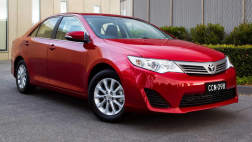The connected world of Gen-Y is particularly under attack from US regulators who see everything from texting to in-car internet use as a clear and present danger to road safety.
The American government is moving to ban any major driving distractions following an exhaustive study that reveals more than 3000 deaths during 2010 are attributed to distraction.
It is currently only calling for voluntary guidelines but the latest US budget includes more than $300 million over the next six years for education and awareness programs to highlight the dangers of distraction.
The move covers communications, entertainment, information and navigation devices and it is aiming to exclude anything that takes two hands to operate or drops a driver's concentration on the road for more than two seconds.
"Distracted driving is a dangerous and deadly habit. That's why I've made it a priority to encourage people to stay focussed behind the wheel," says America's transportation secretary, Ray LaHood.
The new safety guidelines are compiled by his department's National Highway Safety Administration and cover electronic devices fitted to cars, SUVs, pickups and minivans when they are made.
"We recognise that vehicle manufacturers want to build vehicles that include the tools and conveniences expected by today's American drivers," says NHTSA administrator David Strickland.
"The guidelines we're proposing would offer real-world guidance to automakers to help them develop electronic devices that provide features consumers want—without disrupting a driver's attention or sacrificing safety."
The US government is proposing a phased-in series of guidelines, and the first step includes limiting operation of devices to one hand, limiting manual inputs and limiting unnecessary visual information in the driver's field of view.
More importantly, it wants carmakers to develop a system that automatically disables visual-manual text messaging, internet browsing, social media browsing and address entries in satnav unless a vehicle is parked.
"Increasingly, data shows that as technology evolves, cell phones aren't the only potential distraction in vehicles," says LaHood. "Many carmakers are now developing in-vehicle electronic systems that can give directions, post to social networking sites and search the Internet."
In the second phase, similar restrictions will apply to devices which are not fitted to a vehicle during manufacturing. The American government is now opening its proposals for public comment before producing its final guidelines.


.jpg)


.jpg)












.jpg)

Comments